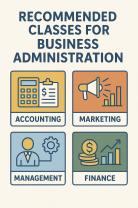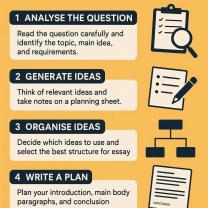What is ethics PowerPoint?
An "ethics PowerPoint presentation" refers to a presentation created using Microsoft PowerPoint that focuses on the topic of ethics. Microsoft PowerPoint is a popular software tool for creating visual presentations, and it's often used to convey information, ideas, and concepts in a structured and visually engaging format.
An ethics PowerPoint presentation might cover a wide range of topics related to ethical principles, values, and conduct. Here are some common elements that could be included in an ethics presentation:
Introduction to Ethics:
- Provide an overview of what ethics is and why it is important in various aspects of life, including professional settings.
Definition of Ethical Principles:
- Define key ethical principles such as honesty, integrity, respect, responsibility, fairness, and compassion. Explain how these principles guide ethical decision-making.
Application of Ethics in Business:
- Discuss the relevance of ethics in the business world. Explore how ethical behavior contributes to organizational success, reputation, and the well-being of stakeholders.
Case Studies:
- Include real or hypothetical case studies that illustrate ethical dilemmas in different contexts. Discuss the decisions made, the consequences, and the ethical principles involved.
Ethical Decision-Making Models:
- Introduce ethical decision-making frameworks or models that individuals and organizations can use when facing ethical challenges. This might include steps such as identifying the problem, considering alternatives, and evaluating consequences.
Code of Ethics:
- Discuss the concept of a code of ethics and how organizations develop and implement codes to guide the behavior of their members. Provide examples of industry-specific codes of ethics.
Corporate Social Responsibility (CSR):
- Explore the idea of corporate social responsibility and how organizations can contribute positively to society while adhering to ethical standards.
Ethical Leadership:
- Highlight the importance of ethical leadership in guiding organizations and teams. Discuss the traits and behaviors of ethical leaders.
Ethics Training and Education:
- Discuss the role of ethics training and education in fostering an ethical culture within organizations. Explore how individuals can develop their ethical reasoning skills.
Legal vs. Ethical:
- Differentiate between actions that are legally permissible and those that are ethically sound. Discuss scenarios where legal and ethical considerations may align or diverge.
Tips for Ethical Conduct:
- Provide practical tips for individuals to promote ethical conduct in their personal and professional lives. This could include communication strategies, conflict resolution, and building trust.
Q&A Session:
- Allocate time for a question-and-answer session to engage the audience and address specific concerns or inquiries related to ethics.
When creating an ethics PowerPoint presentation, it's essential to use visuals, such as images, charts, and graphs, to enhance understanding and engagement. Additionally, the presentation should be clear, concise, and tailored to the audience's level of familiarity with the topic.
How is an ethics PowerPoint presentation structured or defined?
An effective ethics PowerPoint presentation should be structured to engage the audience, clearly convey the key points, and prompt critical thinking around ethical dilemmas. Here's a common structure you can follow:
Introduction (5-10 minutes)
- Captivate the audience: Start with a thought-provoking quote, case study, or real-life scenario related to ethics. This grabs attention and sets the tone for the presentation.
- Define "ethics": Briefly explain the core principles of ethics, such as fairness, justice, and responsibility. You can also mention different ethical frameworks (e.g., utilitarianism, deontology).
- State the presentation goals: Clearly outline the key questions or issues you will explore in the presentation.
Main Body (20-35 minutes)
- Present the main ethical dilemma or issue: Explain the specific ethical challenge or problem you want to address. Provide context and relevant details to ensure everyone understands the situation.
- Analyze the different perspectives: Explore the various stakeholders involved and their potential ethical positions. Use case studies, examples, and hypothetical scenarios to illustrate the complexity of the issue.
- Introduce relevant ethical frameworks or theories: Explain how different ethical frameworks (e.g., utilitarianism, deontology, virtue ethics) can be applied to analyze the dilemma. Discuss the strengths and limitations of each approach.
- Facilitate discussion and critical thinking: Encourage audience participation through polls, questions, or small group discussions. This helps them engage with the material and consider different perspectives.
Conclusion (5-10 minutes)
- Summarize key points: Briefly recap the main ethical issues and arguments presented.
- Offer potential solutions or recommendations: While avoiding definitive answers, suggest possible ways to approach the ethical dilemma or encourage further discussion and exploration.
- Call to action: Conclude with a thought-provoking statement or question that prompts the audience to reflect on the importance of ethics in their personal and professional lives.
Additional Tips:
- Use visuals effectively: Incorporate relevant images, diagrams, and charts to enhance understanding and engagement.
- Maintain a clear and concise presentation: Avoid jargon and complex language. Use strong visuals and storytelling to make the content relatable.
- Practice your delivery: Rehearse your presentation to ensure smooth flow and confident delivery.
- Be open to questions and discussion: Encourage audience participation and create a safe space for diverse perspectives.
Remember, the structure can be adapted based on your specific topic, audience, and presentation time. The key is to ensure a logical flow, clear explanations, and engaging delivery to effectively address ethical issues and spark thoughtful discussions.
Hopefully, this provides a helpful framework for structuring your ethics PowerPoint presentation! Feel free to ask if you have any further questions or need specific examples.












